Indiana may not be as well-known among hunters as other states. However, it can still provide fruitful hunting if you approach it correctly. This article will examine the reasons Indiana has the best deer hunting in the U.S.
Like all states, Indiana has specific regulations and rules you must follow to legally hunt deer in this state. Once you understand these rules, deer hunting in the state can be very fun and rewarding.
1. Public Land Access
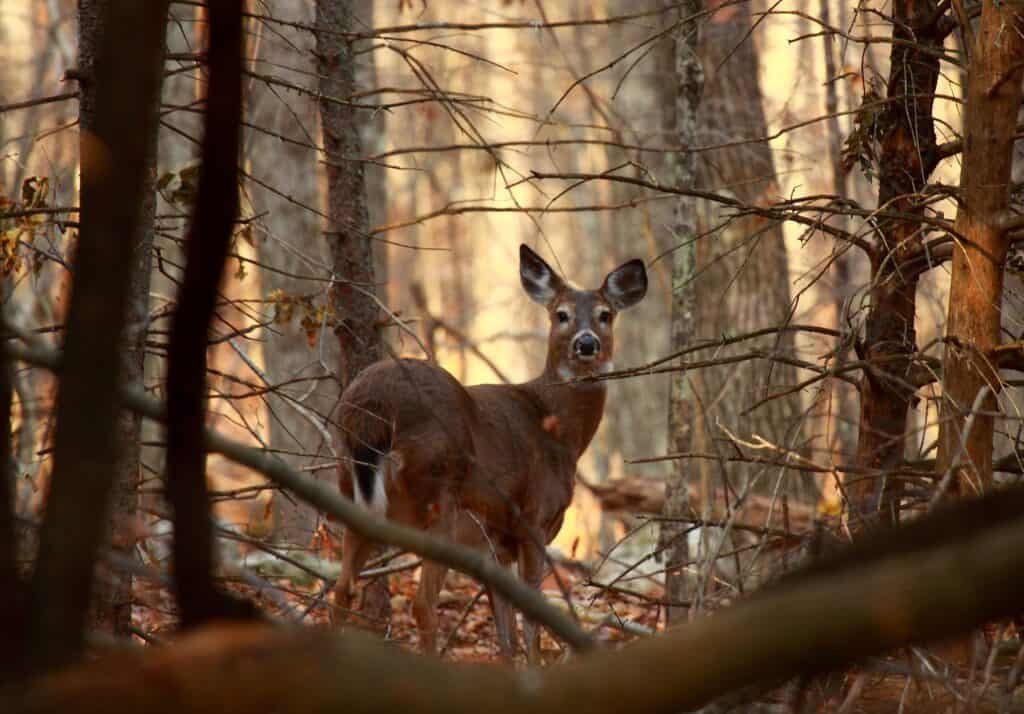
One of the best reasons Indiana has the best hunting in the U.S. is that hunters can hunt within a variety of land types, including public lands such as state forests.
©Gary Gello/Shutterstock.com
Indiana provides over 55,000 acres of public land for hunting purposes. That’s far more than other states and which allows hunters the option of hunting throughout Indiana. You can hunt in state forests or other wildlife management areas. While some of these areas may have special rules and regulations, they’re all pretty hunter-friendly, allowing you to hunt in the area easily.
Of course, there are private lands you can hunt on, too. Landowners in the state often hunt on their own land, though many still head to public lands, where deer populations are often carefully managed.
Occasionally, you can find well-managed areas that are privately owned but used exclusively for hunting. While these areas are more exclusive than the public lands, they can charge hefty fees for hunting rights.
2. Top-Rated Counties
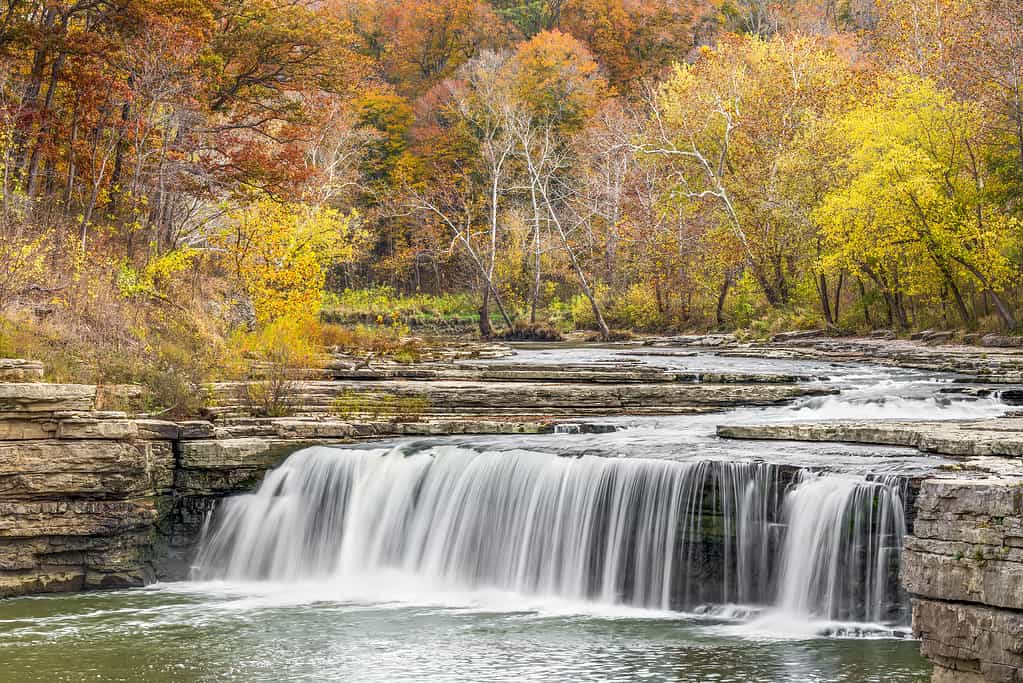
While some areas are more well-known for their big bucks, that doesn’t necessarily mean they’re the best
place to hunt. Often, these areas are crowded, which may make it harder to bag a deer.
©Kenneth Keifer/ via Getty Images
There are some counties in this state that are top-rated by the B&C buck list, particularly Fayette, Delaware, and Jasper Park. Simply put, that means these counties provide stellar bucks for hunters to potentially bag when compared to the rest of the country. If you want a big buck, your best option is to hunt in one of these counties.
Of course, because they are so highly rated, these counties tend to be particularly crowded, too. Therefore, it’s highly recommended that you get your start early or purchase hunting rights on private land if you want to hunt in one of these areas.
Some public lands in these counties may be particularly strict around bag limits, as they often expect more hunters to be in the area. Therefore, each hunter may be allowed fewer deer.
3. High Deer Population
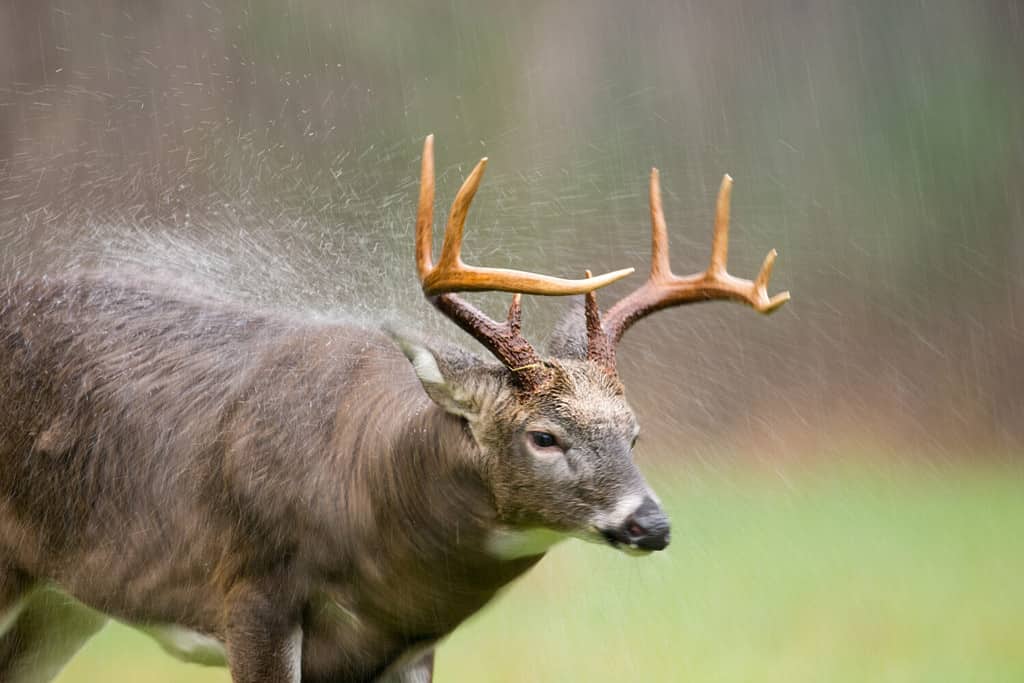
When it comes to deer population, Indiana has one of the highest numbers in the United States.
©Tony Campbell/Shutterstock.com
Indiana has a pretty high deer population compared to many other states. While deer population estimates are challenging, it’s thought that Indiana has around one million deer throughout the state. That easily puts it in the top ten for the raw number of deer.
Of course, these deer are not spread evenly throughout the state. Instead, this deer population tends to be concentrated in specific areas. Therefore, you need to be careful in choosing your hunting location, potentially making a few visits before the season to check for signs of deer.
This higher deer population means you’re more likely to run into a trophy buck. It also allows the state to offer a higher bag limit than other states. Whether you’re planning on bagging a big buck or just want some venison, this state can fulfill both needs.
4. High Deer Density
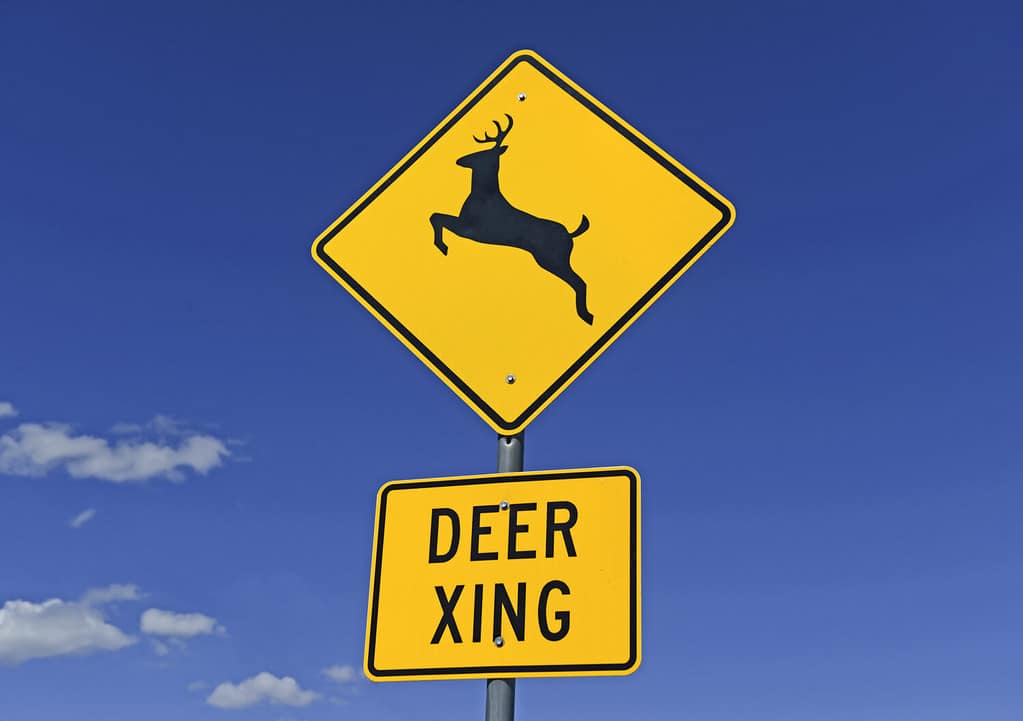
The high density of deer in Indiana gives the state a score of 28.
©nyker/Shutterstock.com
On top of having a lot of deer, Indiana also has a pretty high deer density. Simply put, this is the number of deer “per mile” in the state. In Indiana, that score is around 28, putting Indiana in fifth place among all states in the country.
Of course, that doesn’t mean that there are literally 28 deer in every mile. Some miles may not have any deer due to the habitat or amount of development. Others may have far more than 28. Either way, that’s tons of deer – plenty to make hunting much more successful than most other states.
Many factors determine how many deer are “per mile” in each state. However, this metric is usually determined by the estimated deer population and the size of the state. While Texas has the most deer in the country, its deer density is actually pretty low because it is just so big.
Having a higher deer population is one of the huge reasons Indiana has the best deer hunting in the U.S.
4. Increasing Deer Population
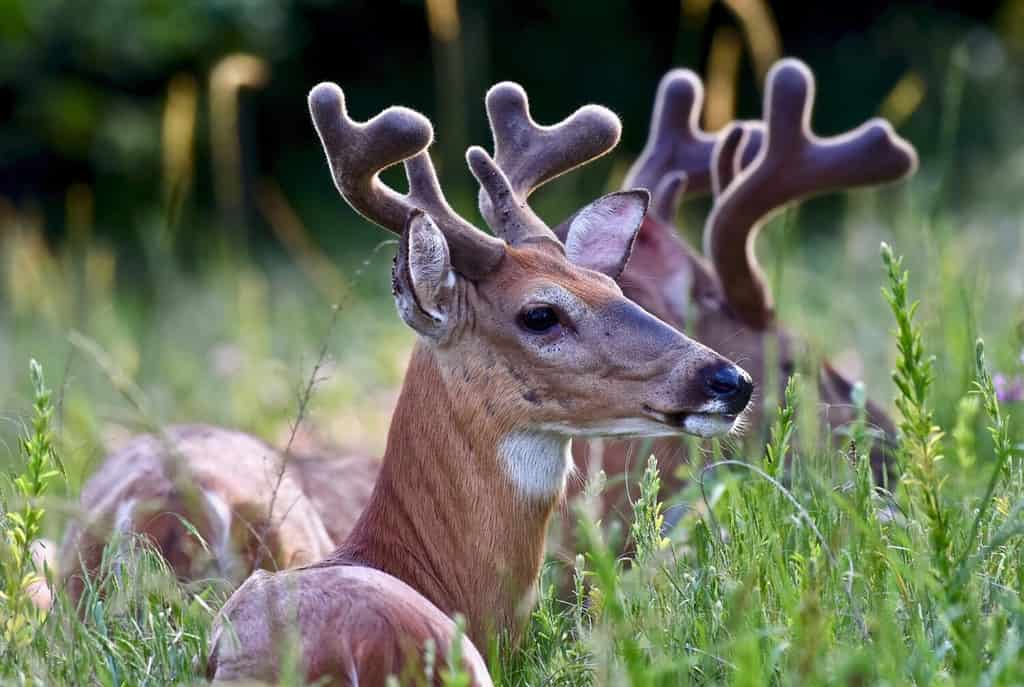
More deer means more bucks, and more bucks means
biggerbucks (especially with a one-buck bag limit).
©Jeramey Lende/Shutterstock.com
You may be surprised to learn that the deer population in many states is going down despite careful management. Often, it isn’t hunting that drives down the deer population, as bag limits help ensure only a certain number of deer are bagged each year. Instead, it’s other factors, like habitat loss.
That said, in Indiana, the numbers are actually increasing. More deer are taken each year in the state than the year before, which is a good indication that more deer are wandering around. (Otherwise, deer would be harder to find, leading to fewer deer being harvested.)
Therefore, you can expect the hunting in this state to get even better with each passing year.
5. Extra Hunting Tags
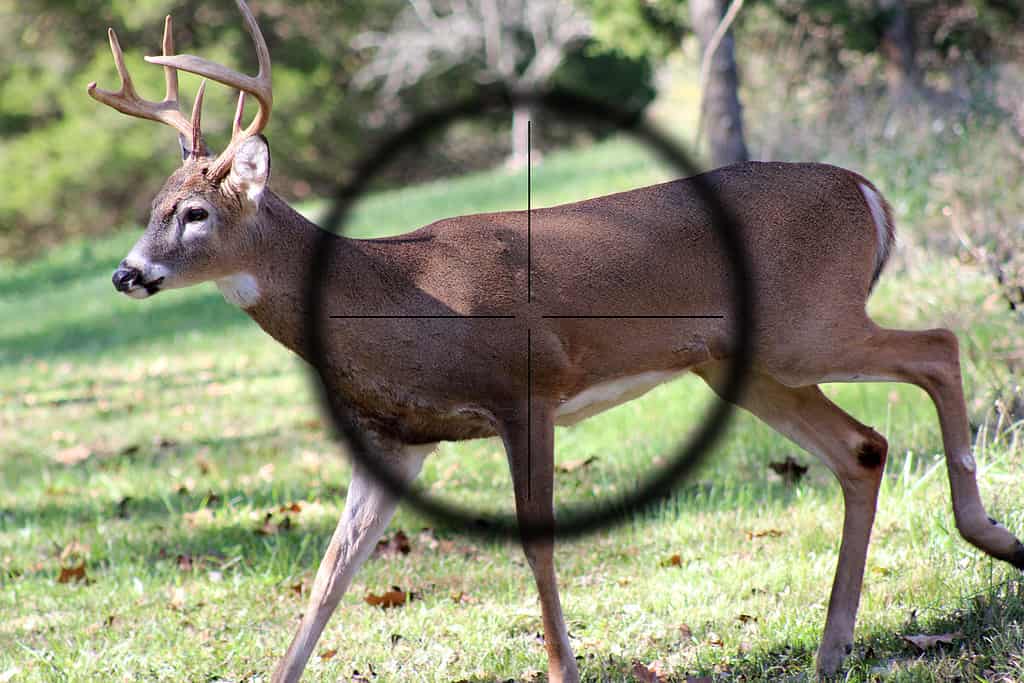
You may be allowed to hunt extra deer in Indiana, thanks to an increase in deer population.
©AdamLongSculpture/iStock via Getty Images
Typically, Indiana only allows you to harvest one antlered deer during the regular deer season. This bag limit is comparable to most other states, which also tend to only allow one antlered deer per season.
However, there are other circumstances where you may be allowed to hunt extra deer. Because the deer population is only increasing in the state, sometimes reduction hunts are called, which have a higher bag limit. These hunts are specifically called to reduce the deer population in a specific area, so you may need to travel to hunt (even if you are a resident).
In a deer reduction zone, the bag limit is increased to ten. However, only one of these may be antlered. Furthermore, you must harvest an antlerless deer in these zones before you can harvest an antlered one.
Often, you have to be selected to hunt during these reduction events. Therefore, it is a bit of a lottery system.
Furthermore, you can hunt two antlerless deer on top of your antlered deer (or just take three antlerless deer if you don’t take an antlered deer at all). Therefore, if you’re trying to fill your fridge, you can potentially bag several deer in a season.
6. Easy Licensing
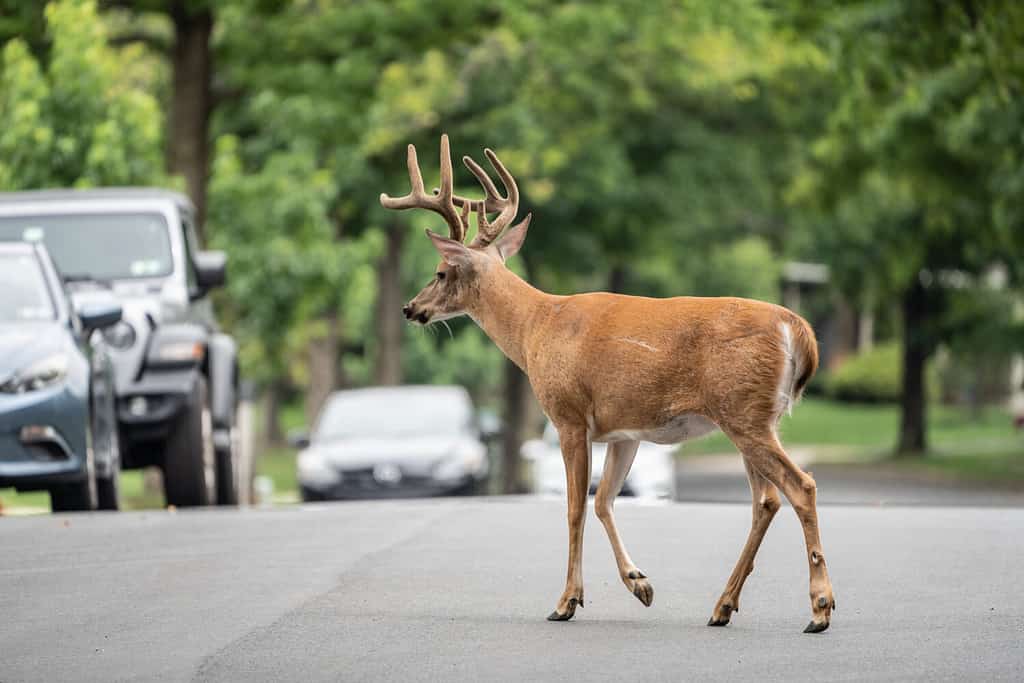
Indiana requires a license to hunt but offers much easier guidelines for hunters.
©Amy Lutz/Shutterstock.com
Like most states, you need a license to hunt in Indiana. However, their requirements and guidelines are much simpler than in some other states. For instance, you only need a hunting license and then a license for the specific season you’re hunting in.
If you want to hunt during firearms season, you simply purchase a hunting license and a firearm license. You can hunt during multiple seasons (or even all of them, if you want).
Each base license allows you to hunt one antlered deer. After that, you’re allowed to purchase “bonus antlerless deer” licenses. These can be used in any county, though each county will have a limit on the antlerless deer you can hunt in that area. One county may have a bag limit of 2 antlerless deer, for instance.
That said, you are allowed to hunt in different counties. Therefore, you can spread out your antlerless deer tags as you’d like.
The state even offers a bundle, which provides you with a regular license and two bonus licenses. With this bundle, you can hunt one antlered deer and two antlerless deer. After that, you can always purchase more bonus licenses as you’d like. It’s basically a pay-per-deer state.
7. Varying Seasons
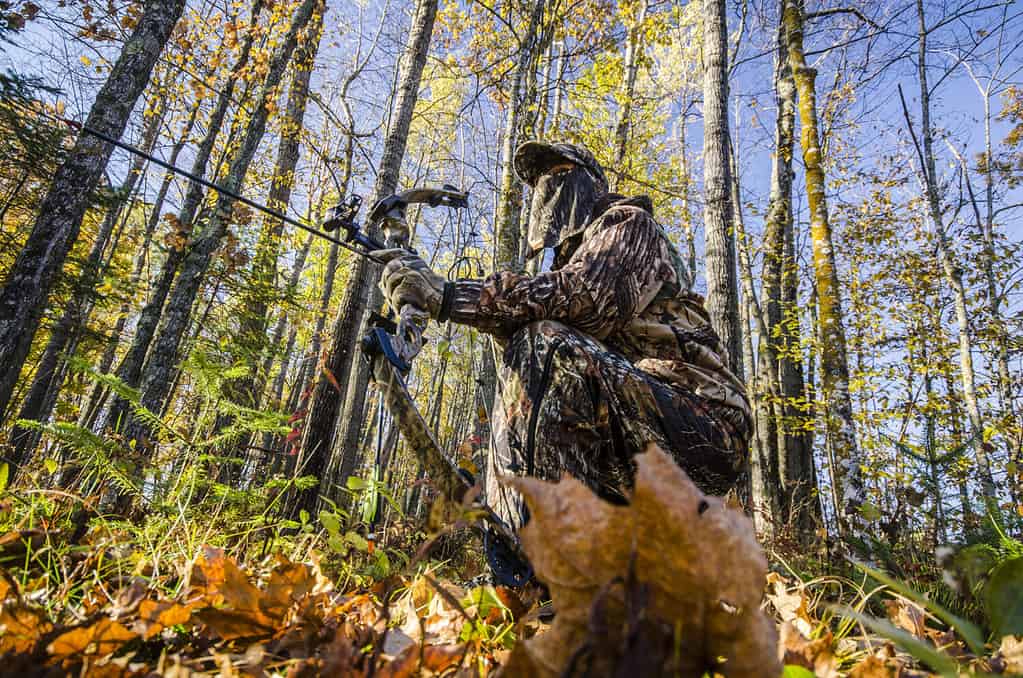
Indiana features various hunting seasons that permit you to hunt with a variety of weapons.
©paul geilfuss/Shutterstock.com
There are several hunting seasons throughout the state, allowing you to hunt at different times and with different weapons. This means that you won’t have to worry about other hunters with firearms when you’re trying to hunt with a bow and arrow. It also lets you mix things up a bit, as you can hunt during different seasons.
Different seasons run at different times. Deer reduction zone season starts very early and runs almost through the whole winter. Take advantage of this season if you’re looking to fill your fridge with venison.
On the other hand, firearms season is the shortest, only spanning a couple of weeks. This shorter season is due to the increased chance of bagging a deer with a rifle instead of archery or a muzzleloader.
There is even a youth deer season when only youth can hunt. If you have children, this season is the perfect time for them to try out hunting.
8. Deer Reduction Zones

Deer reduction zones offer more places for hunters in Indiana.
©Sean Thomforde/Shutterstock.com
Indiana really starts to look like a good place to hunt when you consider their deer reduction zones. These areas have a very high bag limit, allowing you to take many deer during the season. Plus, the season is also very long, as we discussed above.
Currently, the bag limit in one of these zones is ten deer – much higher than the bag limit elsewhere. You do have to harvest an antlerless deer before taking an antlered deer, though. You will need a hunting and deer reduction zone license to hunt in these areas.
While these zones are typically over pretty large areas, you do need permission to hunt on private land. Certain parks and management areas may have smaller bag limits, even if they are within these areas. It’s important to check before heading out.
Luckily, these zones are spread throughout the state, so you can often find one within driving distance.
9. Several CWD Areas
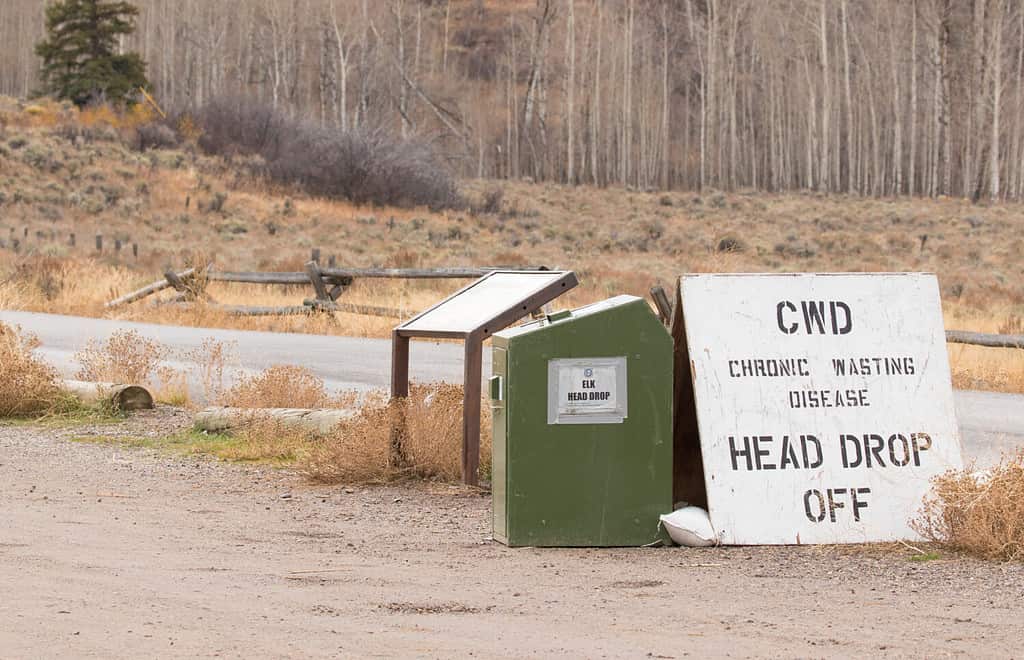
Indiana doesn’t have high amounts of CWD compared to other states.
©moosehenderson/Shutterstock.com
Chronic wasting disease (CWD) is a serious neurological condition that only infects deer and similar animals (like moose). It cannot infect humans, but it can decimate the local deer population. Plus, because there is always a possibility that it will mutate to infect people, handling infected deer or eating the meat isn’t recommended.
Sadly, this disease has spread throughout some other states. Luckily, Indiana hasn’t been heavily infected. Some bordering counties in other states do have this condition, but Indiana has been able to keep it under control (for now, at least).
Therefore, you don’t have to be quite as worried about chronic wasting disease as you do in other states. You can still drop off deer heads for testing throughout Indiana, though, which is completely free. Testing helps ensure that the deer is CWD-free before you eat the meat.
If you make an appointment, a biologist may even be able to collect the sample while you wait. Testing is completely voluntary, but you do get a nice metal tag as a token of appreciation.
10. Large Bucks Throughout the State

Indiana offers huge bucks in almost every area of the state, so you don’t have to worry about hunting in one specific area.
©Tom Reichner/Shutterstock.com
In many states, the big bucks come from specific areas. However, in Indiana, you can find older, bigger bucks throughout the whole state. Many northern counties are particularly known for their larger bucks. Underrated counties are quickly picking up steam, though, especially those that aren’t as popular.
Many of these counties have great trophy potential, so don’t be afraid to go off the beaten path a bit instead of just hitting the “best” areas.
Southern Indiana is particularly going to see big bucks in the coming years. Back in 2019, these counties were hit by EHD, a fatal deer disease. Bag limits were lowered while the area recovered. Now those limits are going back up, though, and many older bucks are now around, thanks to the previously low limit.
The photo featured at the top of this post is © iStock.com/Wirestock
Thank you for reading! Have some feedback for us? Contact the AZ Animals editorial team.







